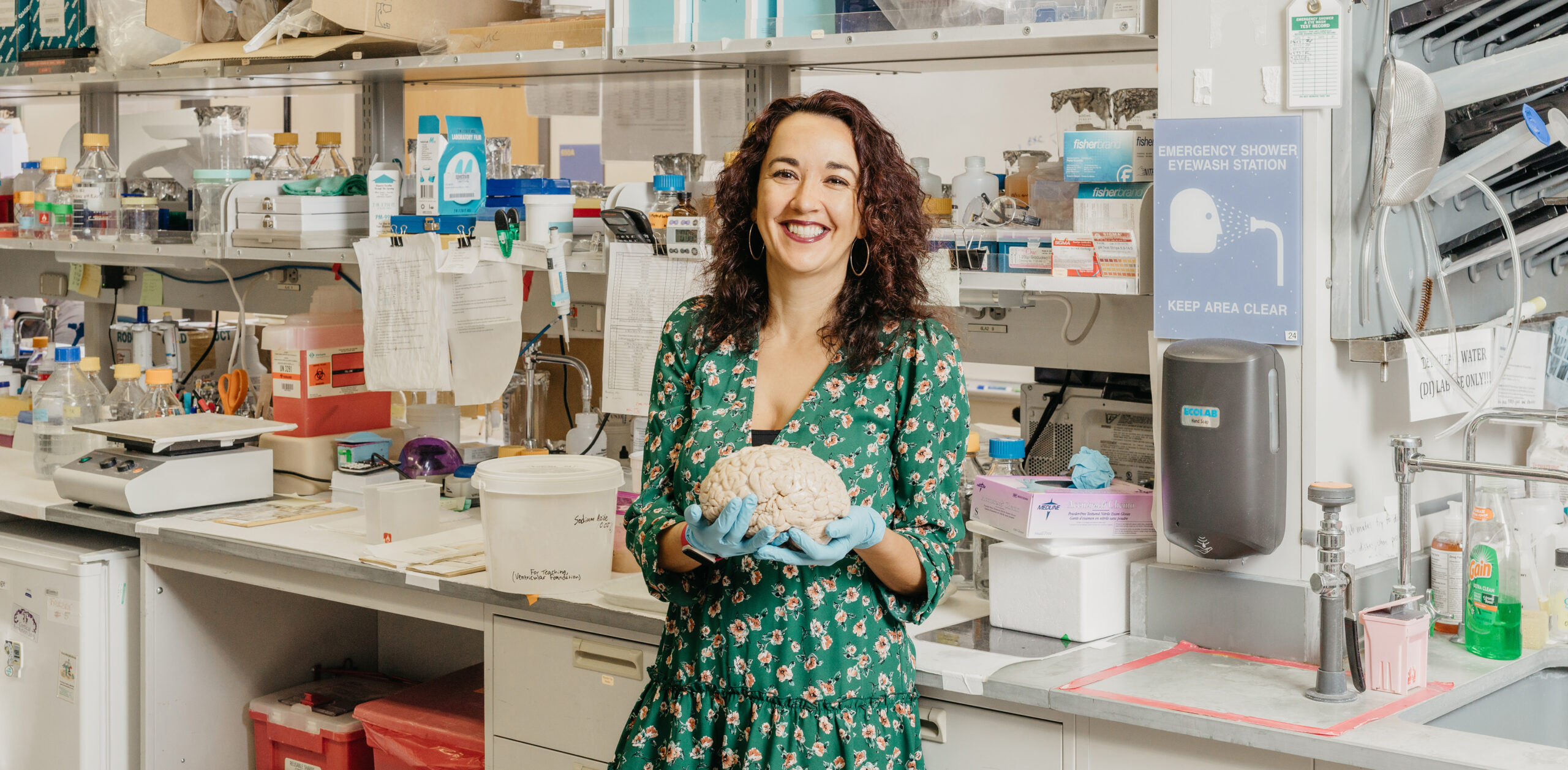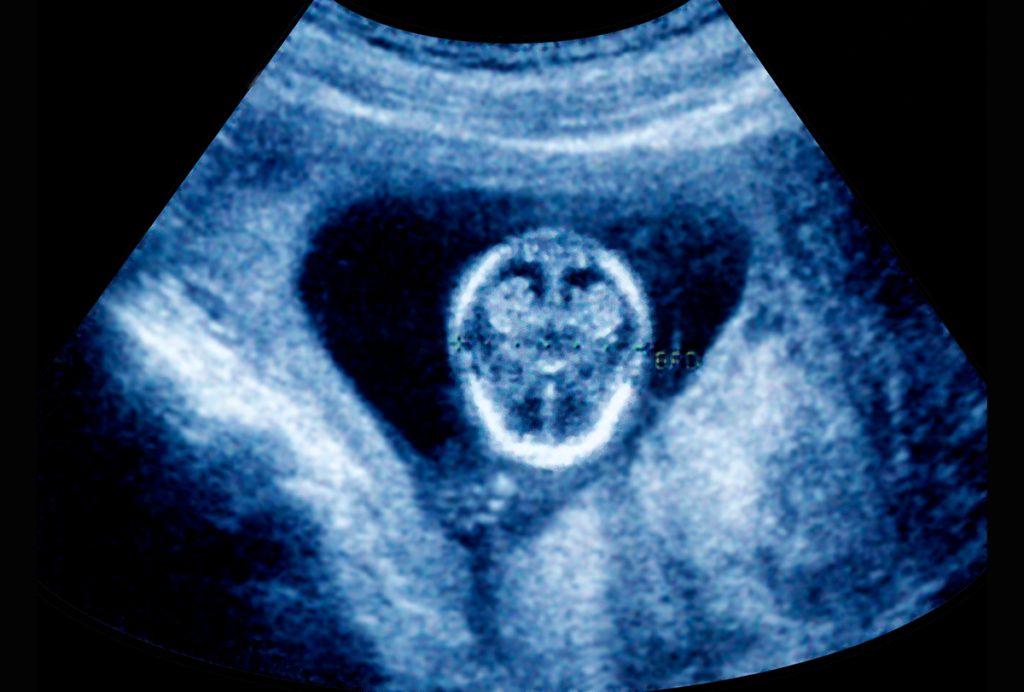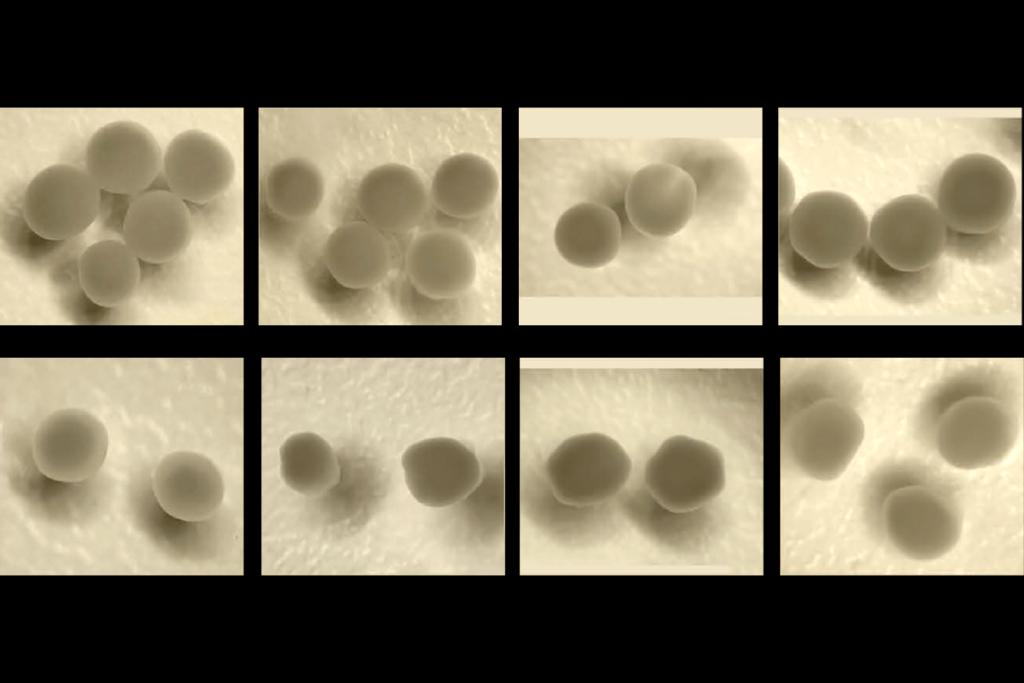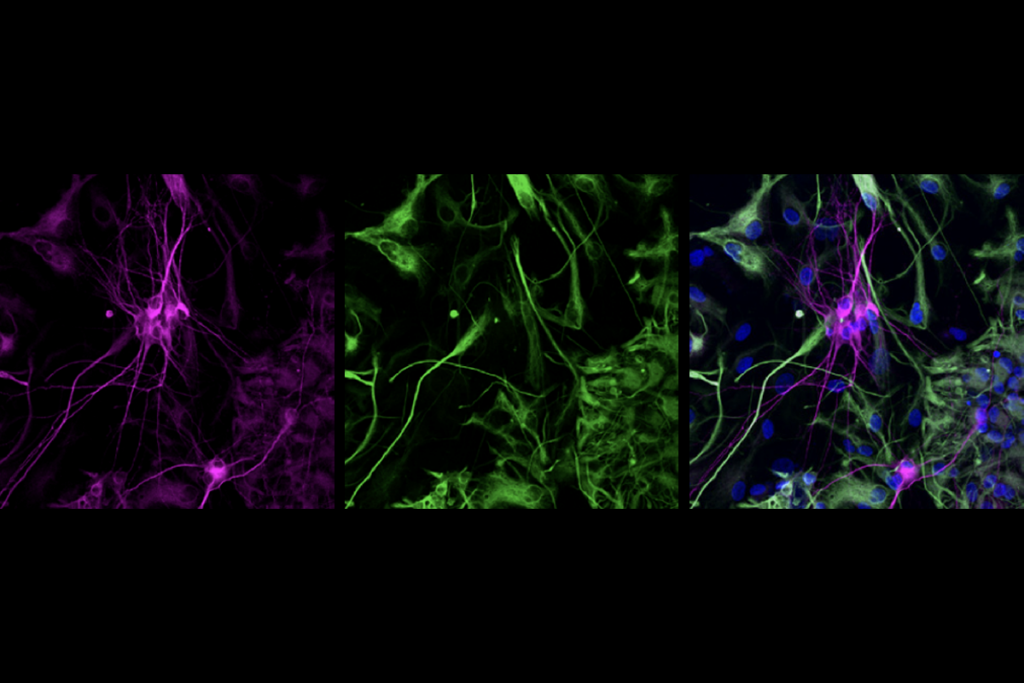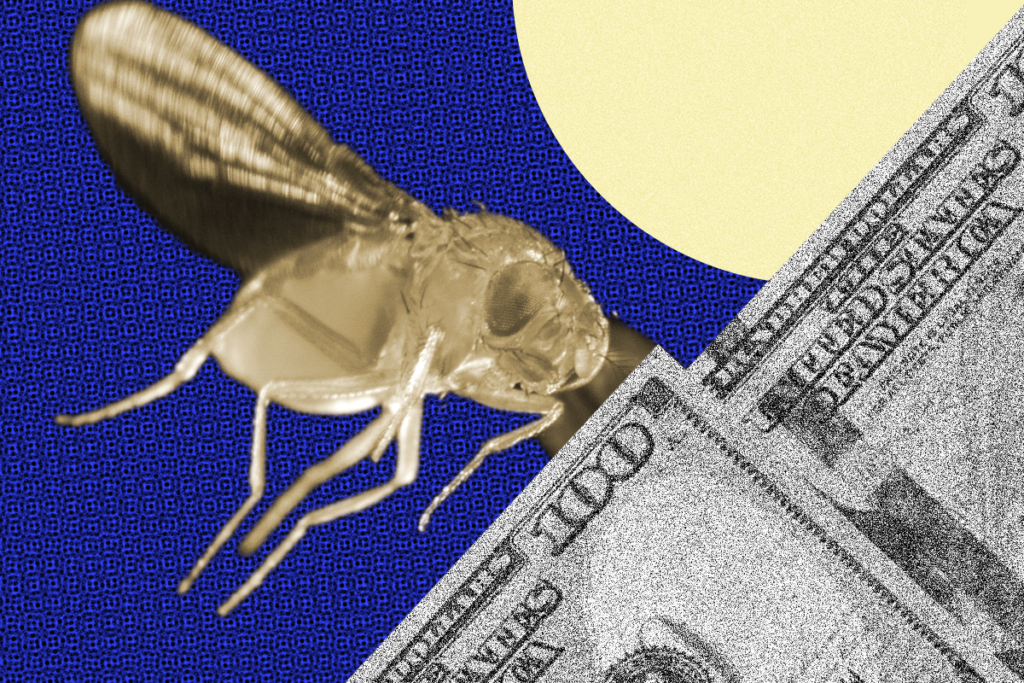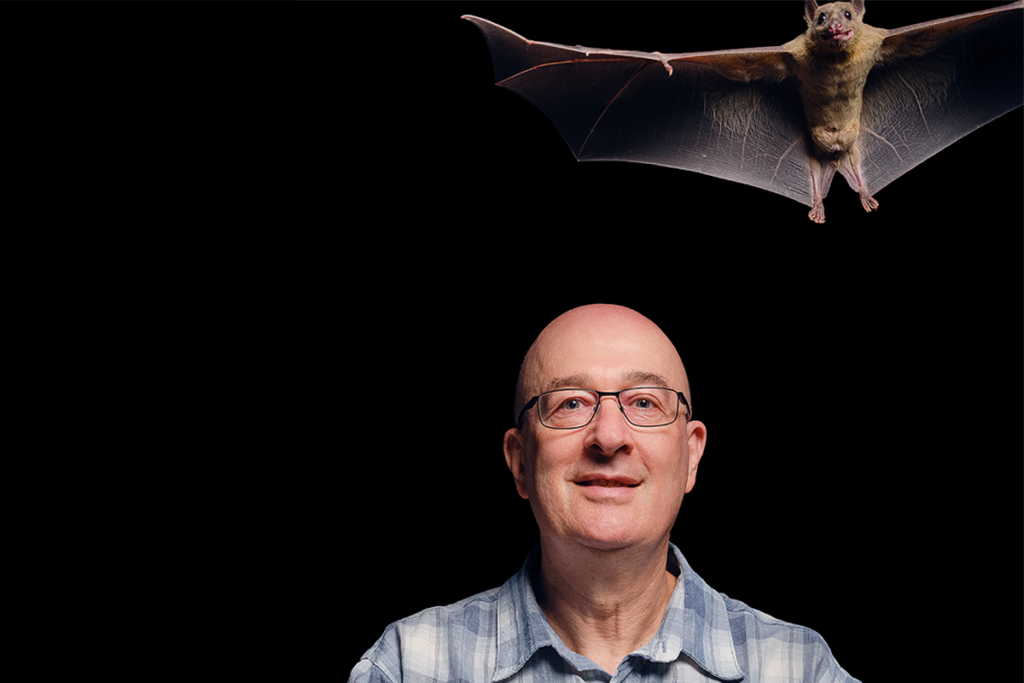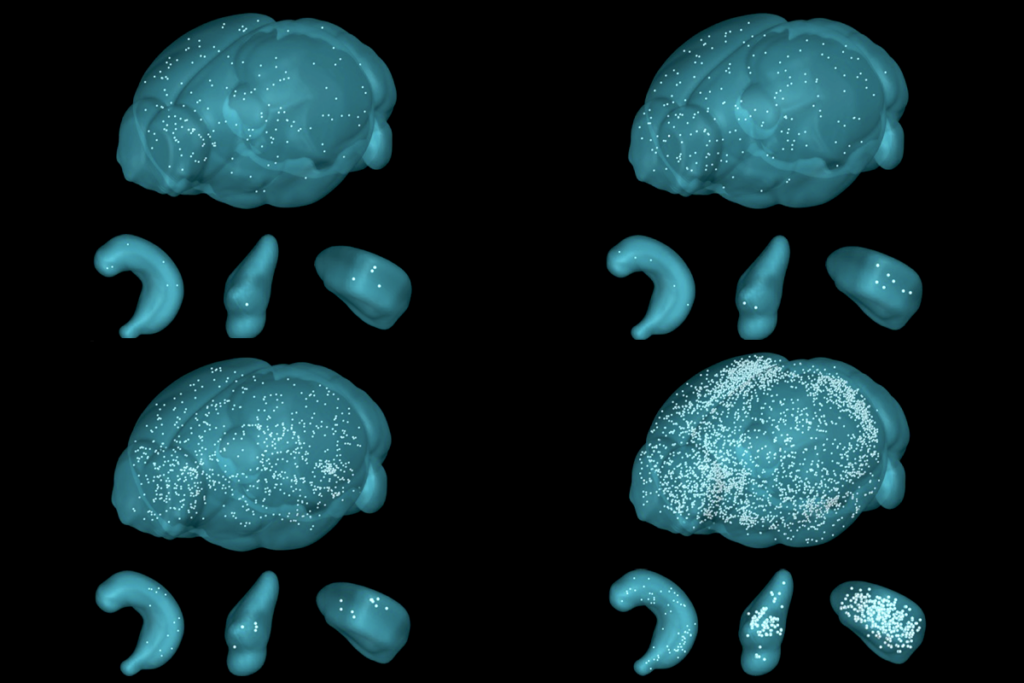Ask Verónica Martínez Cerdeño about her hobbies, and you may get the impression that she holds the power to make time expand. She often spent her weekends caring for vultures in captivity during her undergraduate years at the Complutense University in Madrid, Spain, about 50 miles northeast of her native Toledo; she took up Arabic in her spare time as a postdoctoral researcher at the University of California, San Francisco; and now, as professor of pathology and laboratory medicine at the University of California, Davis (UC Davis), she volunteers in underserved schools twice a month through the Ventricular Foundation, a nonprofit she founded with her husband, a psychiatry professor at UC Davis, in 2016.
Powered by about 20 volunteers — mostly graduate students and researchers from UC Davis and other nearby universities — the foundation offers classroom-based activities to help children and teenagers learn about neuroscience. Volunteers also counsel and mentor older students deciding on a college or career, and give aspiring scientists the chance to talk with professional researchers.
When she isn’t volunteering or investigating the neuroanatomy of autism and other neurodevelopmental conditions, Martínez Cerdeño stays busy in her vegetable garden, tending tomatoes and cucumbers destined for her homemade gazpacho soup. Spectrum caught up with her to talk about her wide-ranging passions.
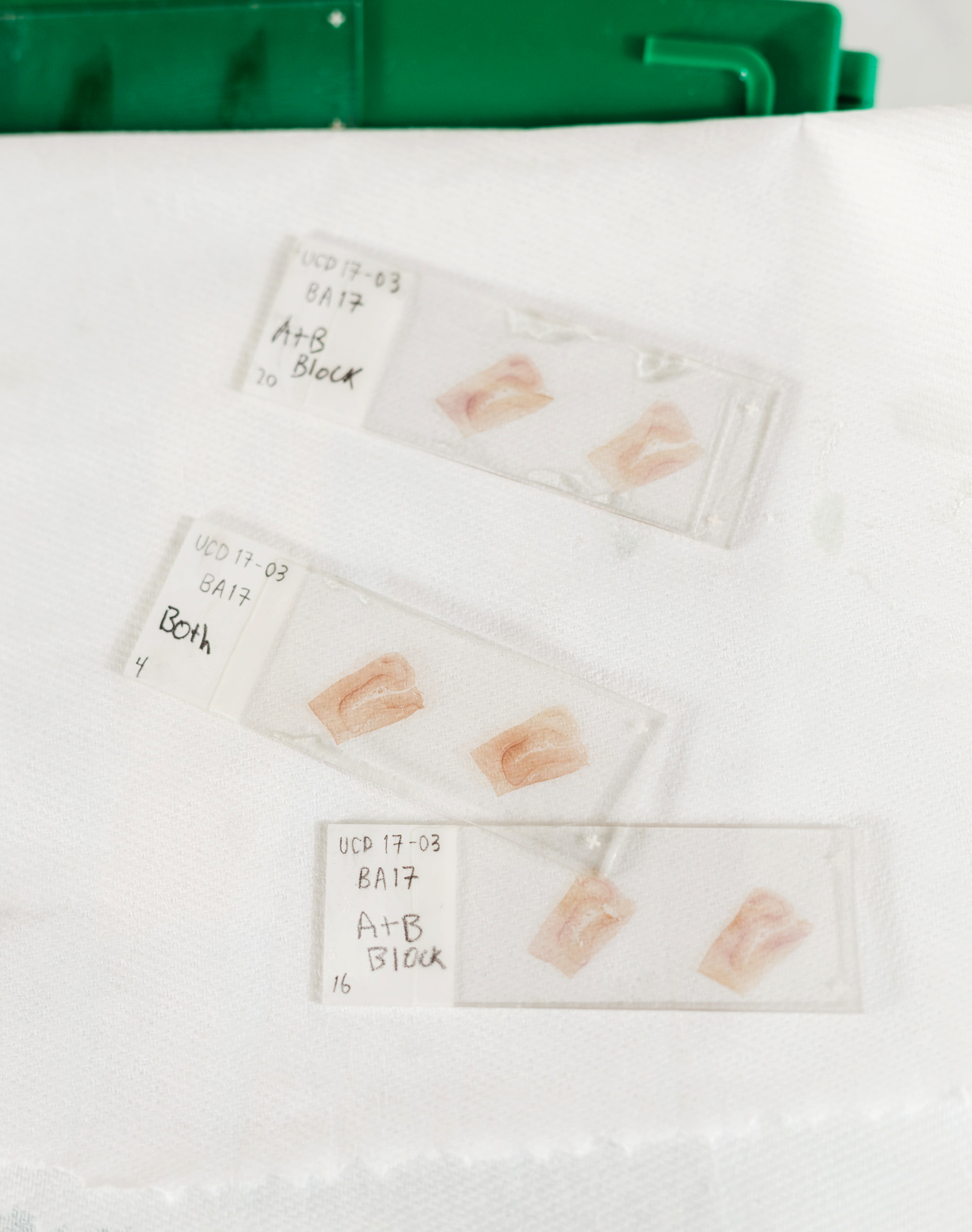
This interview has been edited for length and clarity.
Spectrum: In such a demanding field, how do you find the time to volunteer?
Verónica Martínez Cerdeño: I see this as part of my job. A lot of people from my past helped me to get where I am right now, so I feel like I need to give it back, somehow through my teaching and service to the community. If I don’t do it, I feel that I’m not accomplishing what I should be doing, which is teaching people and sharing my knowledge.
S: Was there a particular experience in a childhood science class that inspired your career or your volunteer efforts?
VMC: In high school, one of my teachers brought in the organs of a cow — the liver, the lungs. You normally don’t remember each class, but this one I remember. It was really interesting. I had an idea in my head that the lungs would be very hard, but when I saw them, I realized, “Oh, they are soft.” Probably that experience had an influence on what I’m doing in the local schools. And I wonder if the kids feel the same when they see a brain I bring to show them.
S: So you do similar activities with the students you visit?
VMC: We talk a little bit about the brain — what it is, how it works, basic things — and then we do experiments, and the experiments change depending on the age of the kids. We also normally bring animal brains and human brains and let them touch them and see how they are.
Some of the students like it a lot, and they’re like, “Oh, so cool!” And some of them don’t like it, and they’re like, “I don’t want to touch it.” I think in general they like it a lot.
In one of the coolest experiments, we use an electrode to connect the nerve in one kid’s arm to that of another kid, so we can transmit energy directly from one kid to the next. One kid moves their hand, the energy goes through the cable to the nerve of the second kid, and their hand moves. So it’s a way to move your hand, not by using your own brain but by using the brain of your friend. It’s a concept that’s very interesting, that the signal is transmitted electrically, but also it’s a weird experience, you know. It’s like, “Oh, what’s going on?” and your finger moves. I think this is the experiment that the kids like the most.
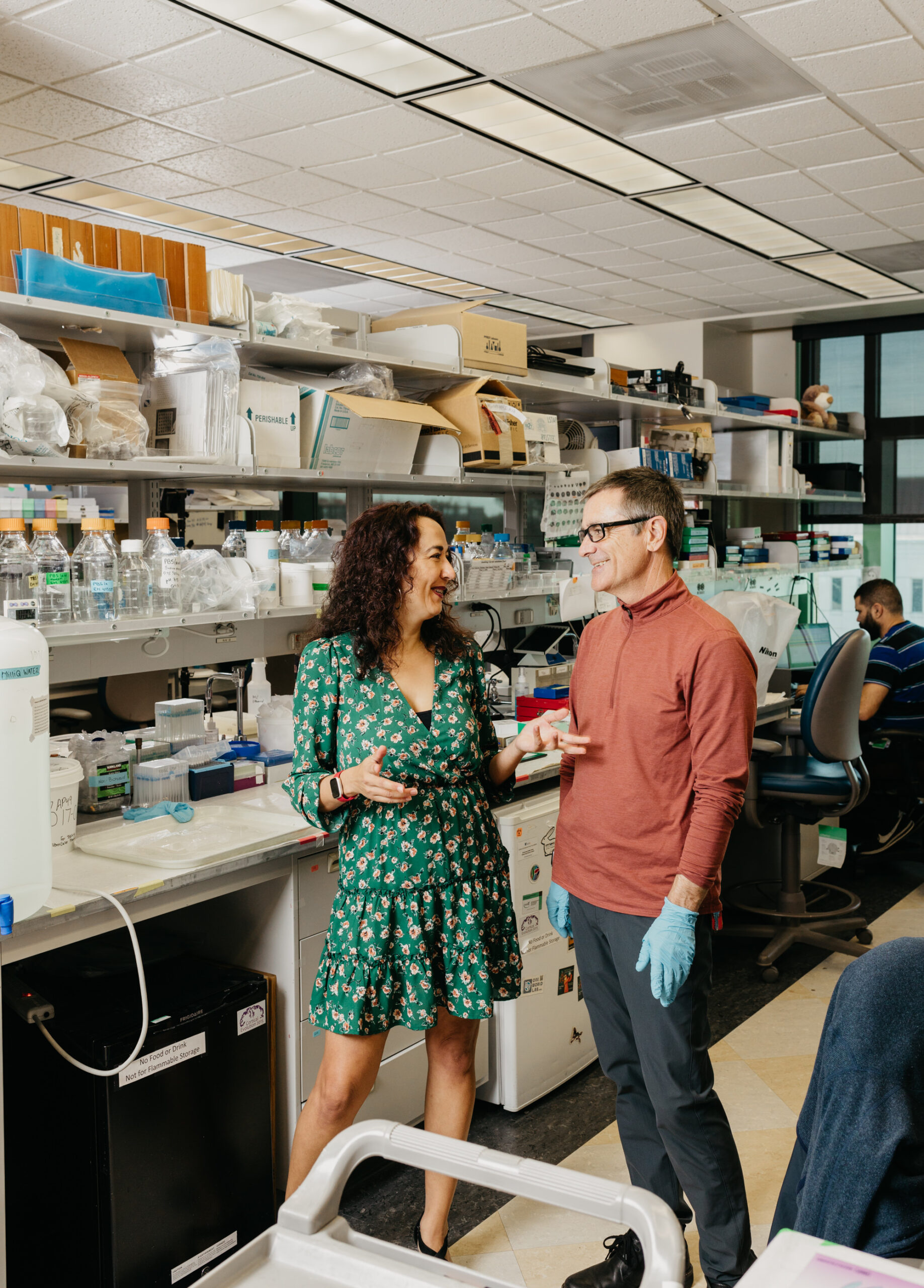
S: Are there any experiences in the schools that have been especially impactful for you?
VMC: About 15 or 20 years ago, I was teaching, and there was a kid who wasn’t paying attention. And I told him, “You are not answering any questions; you are not paying any attention.” And he said, “Well, it doesn’t matter, because I’m Mexican, so I’m not going to do anything in life.” And I thought, “What are you talking about?” It was so sad that this kid — so little, I think he was in fourth or fifth grade — had decided that he wasn’t going to pay attention because there wasn’t a future for him. So I told him, “That is not true, answer the questions for me.” And he answered the questions, and I said, “You are so smart, you answered all the questions right.” This opened my eyes to a big problem we have in the United States.
Last year my volunteers and I went to a school, and we were speaking in Spanish because most of my volunteers are Hispanic, and there was a little kid who told another little kid, “Look, look, the doctor speaks Spanish.” And I said, “Of course I speak Spanish.” It’s an interesting situation because, in their mind, doctors don’t speak Spanish. So it’s good to serve as a role model for these kids. This is a story that I find throughout time.
S: Besides volunteering, you have a lot of other hobbies — collecting fossils and birding, just to name two. Why are you interested in these subjects?
VMC: I just love evolution. I don’t know why, but the idea that one thing, with time, can mutate and acquire new capacities, to the point that it becomes a new species, is a thing that always interested me. So, for me, the fossils are a way to see this evolution.
I also have a collection of animal guide books. I have like 50 guides of all kinds of birds in different areas of the world. In college I belonged to the ornithology group. Another time I participated in a research program that was in the tip of Spain, studying the migration of European birds into Africa. When I came to California, I continued birding. I have had the opportunity to live in Europe and on the East and West coasts of the U.S., so this has given me a different perspective on the world of birds. Because you can see that, in different regions or on different continents, different species occupy the same evolutionary niche.
I love very much the natural world and the animals and the plants. I guess that it’s innate in me as a scientist, to want to learn why things are like that, and how.
